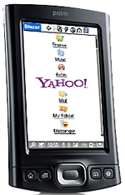The latest unit shipment figures for handhelds don’t bode well for the vendors that make them. Market-research firm IDC reports the worldwide handheld
device market opened the year with its 13th consecutive
quarter of year-on-year decline. This is due, the firm said, to users transitioning to “converged” mobile and other consumer electronics devices.
Vendors shipped just over 900,000 handheld devices in the
first quarter of 2007, 36.3 percent fewer than the previous quarter and 40.6 percent fewer than the same quarter a year ago, according to IDC.
Part of the problem is that features once exclusive to
handhelds are now showing up elsewhere.
“Personal information management, the key feature that once distinguished handheld devices, can now be found commonly
on converged mobile devices,” said Ramon Llamas, research analyst
with IDC’s mobile device technology and trends team, in a statement.
“The growing popularity of converged mobile devices, combined with
declining prices for laptop computers, have put tremendous
pressure on the handheld device market. The addition of multimedia and GPS
features onto handheld devices did not stem their decline because standalone
multimedia players and personal navigation devices grew in popularity.”
Handheld pioneer Palm, the subject of buyout rumors earlier this year, is still the clear leader in shipments by the
latest figures, though it dipped below 300,000 units and saw its
lead over HP shrink to fewer than 100,000 units. IDC also said that Palm has not updated the Palm Z22 or Palm TX devices, which were introduced to the market in late 2005.
 |
The Palm TX. Is there a point anymore? Source: Palm |
However, as with its competitors, Palm
is investing heavily in the converged mobile-device market with its
Treo line. IDC also noted HP’s recently announced 510 Messenger, its first
non-QWERTY
Mio was the only top-five handheld vendor (at No. 3)
in IDC’s list to post positive year-on-year change. The gains came with Mio’s
introduction of the P350 and the P550. Like many
of its previous handheld devices, Mio leads with GPS capability in addition to
its PIM functionalities.
The handheld market’s decline was highlighted by Dell’s recent exit. Dell began 2007 with handheld shipments below 100,000 for the first time since late 2002.
It still retains
the No. 4 position in IDC’s tally, ahead of Sharp. IDC said Dell has not
announced a replacement for its Axim X51 series. Instead, Dell continues to
support and sell its remaining inventory while also selling third-party
devices at its Web site.
Sharp rounded out the top five with shipments of its Zaurus product line,
but registered the largest year-on-year decline of the leading vendors. Unlike other vendors, all of Sharp’s devices arrived in Japan.


